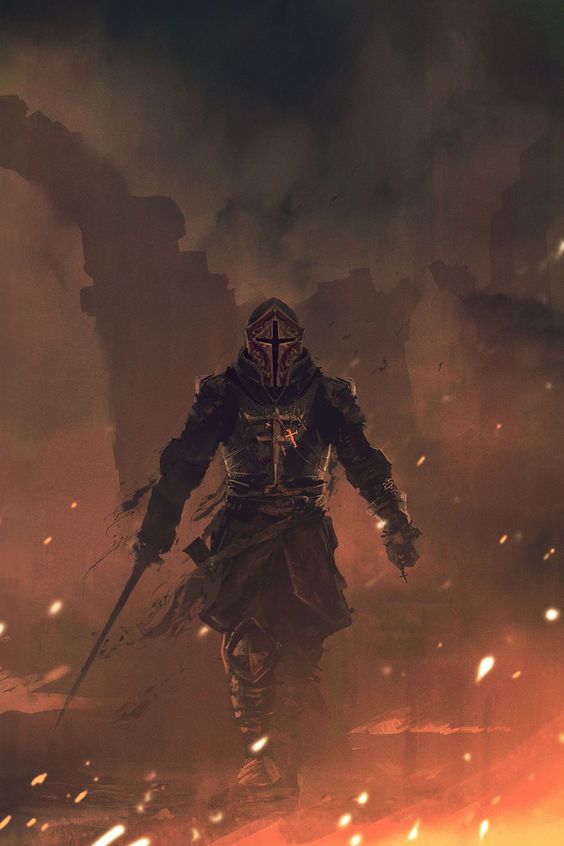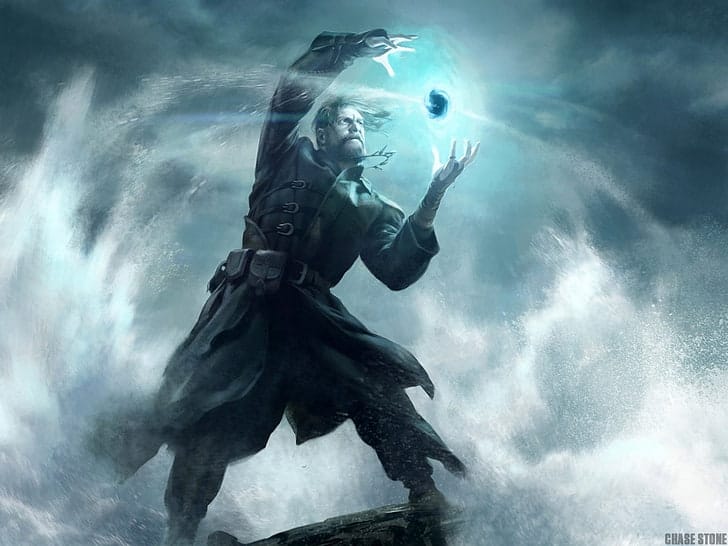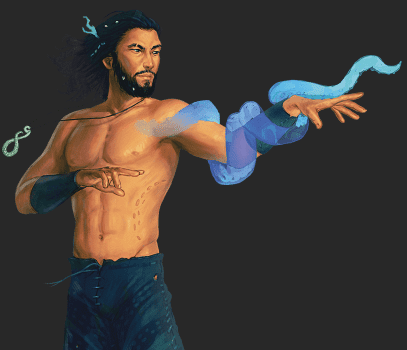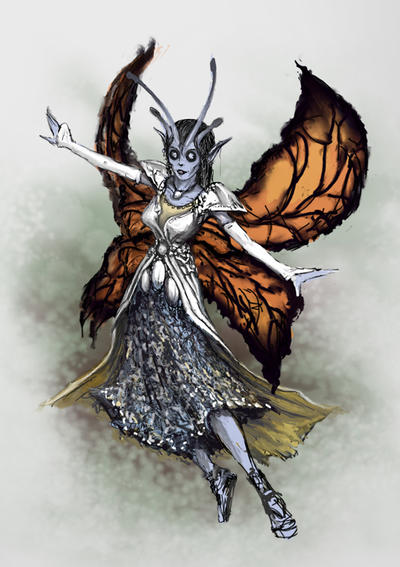D&D 5e: Beast Master Conclave Ranger Guide

D&D 5e: Beast Master Conclave Ranger Guide
Role in the Party
No class has had as much hate as the Player’s Handbook version of the Beast Master Ranger: you seemingly had infinite freedom since you could pick any beast of an appropriate challenge rating to be your animal friend for life, but you needed to use your action to command the beast to do anything useful, so your beast would stand still if you tried to attack the enemy yourself, and its attacks were either as good as yours or worse. Plus, the beast could die, and then you’d have no subclass until you found a new beast, and even then you’d still be sad that your wolf was dead!
You could actually make viable Beast Master Rangers, but you needed to make highly specific builds with very specific creatures like the Giant Poisonous Snake, and even then you still had to follow up on that selection with further feat choices and strategies and in the end, you managed to become “okay”.
The Tasha’s version of the Beast Master Ranger fixed these problems: it technically didn’t introduce a rewrite, but it added an optional class feature that lets you replace the core mechanic of the subclass. This is the version we’ll be referring to in this guide, but if you have the misfortune of playing the PHB Beast Master, check out this guide video if you want to learn how to use the power of a big snake to make it okay:
The new version of the Beast Master Ranger is a solid overall class geared towards tanking, controlling the battlefield, and doing a little bit of extra damage.
The Beast Master Ranger subclass is found in the Player’s Handbook. Click here to pick up your own copy of the Player’s Handbook!
Epic
Good
Meh
Bad
Beast Master Conclave Features
Primal Companion (Optional)
This 3rd-level feature replaces the Ranger’s Companion feature.
You magically summon a primal beast, which draws strength from your bond with nature. The beast is friendly to you and your companions and obeys your commands. Choose its stat block-Beast of the Land, Beast of the Sea, or Beast of the Sky-which uses your proficiency bonus (PB) in several places. You also determine the kind of animal the beast is, choosing a kind appropriate for the stat block. Whatever kind you choose, the beast bears primal markings, indicating its mystical origin.
In combat, the beast acts during your turn. It can move and use its reaction on its own, but the only action it takes is the Dodge action, unless you take a bonus action on your turn to command it to take another action. That action can be one in its stat block or some other action. You can also sacrifice one of your attacks when you take the Attack action to command the beast to take the Attack action. If you are incapacitated, the beast can take any action of its choice, not just Dodge.
If the beast has died within the last hour, you can use your action to touch it and expend a spell slot of 1st level or higher. The beast returns to life after 1 minute with all its hit points restored. When you finish a long rest, you can summon a different primal beast. The new beast appears in an unoccupied space within 5 feet of you, and you choose its stat block and appearance. If you already have a beast from this feature, it vanishes when the new beast appears. The beast also vanishes if you die.
I won’t post the entire stat blocks here, but all three of the beasts have 13+PB armor class, Land and Sea both have 5+(5*ranger level) hit points, and the best of the sky has 4+(4*ranger level) hit points. The Land option has a charge attack that lets it do an extra 1d8 damage and knock an enemy prone if they fail a strength save, Sea can grapple on a hit, and Sky has Flyby and doesn’t provoke opportunity attacks when it flies. The three beasts also deal similar damage, with Land only being one average point higher than the other two: Land does 1d8+2+PB, Sea does 1d6+2+PB, and Sky does 1d4+3+PB. PB is proficiency bonus since you add your proficiency bonus to all the beast’s damage rolls with the attacks in their stat block.
All three options are useful in different situations, but Land and Sky will be used more often since Sea only has a 5 foot speed on land. Also, if you have ranged party members, they may not like your Land beast knocking people prone, but Land’s durability and bonus damage may be more useful.
You have an animal companion that serves as a free bonus action attack, can eat hits, block enemies from moving, do opportunity attacks if they do move, and so on. You don’t even need to care if the beast dies, because all it takes is a long rest or a 1st level slot and one minute to bring it back to full HP.
In theory, a level 20 Beast Master Ranger can use four 1st level spell slots to do 400 hit points of healing to the beast if it somehow died four times that day; this isn’t as insane as it sounds because this is a beast and not a complete player character, but it’s still excellent.
One last thing: The beasts use your spell attack modifier to hit, so make sure your wisdom score is at least somewhat high. Not all ranger builds require high wisdom, but it’s an important aspect of the Beast Master.
Exceptional Training
Beginning at 7th level, on any of your turns when your beast companion doesn’t attack, you can use a bonus action to command the beast to take the Dash, Disengage, or Help action on its turn. In addition, the beast’s attacks now count as magical for the purpose of overcoming resistance and immunity to nonmagical attacks and damage.
This is unchanged from the original PHB version, and the first sentence is redundant with what Tasha’s lets you do at all levels. However, overcoming resistance and immunity to nonmagical damage is nice: it’s just not exciting.
Bestial Fury
Starting at 11th level, when you command your beast companion to take the Attack action, the beast can make two attacks, or it can take the Multiattack action if it has that action.
The new Tasha’s beast doesn’t have the Multiattack action, so ignore that part. But you still get two attacks with your bonus action! Fantastic.
Share Spells
Beginning at 15th level, when you cast a spell targeting yourself, you can also affect your beast companion with the spell if the beast is within 30 feet of you.
The ranger doesn’t get a ton of self-buff spells, but this can be okay at times. The real question is, what does it mean to be targeted by a spell? If you cast Enhance Ability on yourself, surely the beast gets the benefits too.
But what about Searing Smite? It’s a concentration spell with a range of self that makes your next attack deliver some (underwhelming but ignore that) extra fire damage, and you could argue that the spell targets you by giving you the ability to deliver this effect, but you could also argue that the person being targeted by this spell is actually the person who’s hit by the weapon since they suffer all of the damage and everything. If we go with the former explanation, this also works with something like Gust of Wind, but if we go with the latter, something like Dragon’s Breath wouldn’t work with it. Talk to your dungeon master about this one.
Still, there are some decent spells like Ashardalon’s Stride and Absorb Elements that work with this. I can’t think of any amazing combinations that don’t involve a ton of multiclassing though.

Strengths
Your beast is a great tank: it doesn’t have a ton of hit points, but it’s cheap to revive, unlike the sorcerer or the rogue. You could let it die and bring it back to life multiple times per adventuring day. You also have a built-in bonus action attack, and eventually two, so you can give Crossbow Expert the middle finger and use that sweet longbow instead.
Weaknesses
Nothing in this subclass boosts you: it only gives you an animal companion that gets more powerful as you level up, and other than that, you’re stuck with normal ranger features.
You also want enemies to target your beast so it can absorb attacks, but if it dies mid-combat, you don’t have a consistent bonus action attack until your beast is alive again. At the same time, if enemies completely ignore the beast to attack you instead, that’s terrible, since this disposable sack of hit points isn’t being used!
You will also have to spend spell slots to revive your beast unless you want to wait until a long rest to get it back, so that could be an Absorb Elements lost, or if you multiclass, a Shield spell.
Best Race Options
The Land and Sea beasts are both Medium sized, so any Small race can ride them as a mount. The original Kobold from Volo’s Guide to Monsters has Pack Tactics, giving it advantage on attack rolls against enemies within 5 feet of an ally. Your beast is an ally. You can ride on top of your beast and get a permanent advantage in melee, or you could do a ranged build and do a similar thing by having the beast run up to the enemy. However, the Monsters of the Multiverse Kobold does not have Pack Tactics: it’s still an okay race but it’s nothing special.
The beast acts during your turn, so a better initiative means your beast gets to act sooner. The Harengon comes with a built-in bonus to initiative rolls equal to their proficiency bonus, plus some extra goodies.
Firbolgs can talk to animals, so if you want to play as a ranger who loves animals, this is a good pick.
Choosing the Right Skills
You will be called upon as the party’s Survival expert. Since you have an animal companion and are very nature related, you may also be expected to be proficient in Nature and Animal Handling, even if they’re not super useful skills.
Perception proficiency is both fitting and extremely important since it’s a powerful skill and makes sense given the theming of a ranger. This is a good place to put Canny expertise if you don’t know where else to put it.
One skill for escaping a grapple is helpful: you are probably a ranged ranger who wants Acrobatics, but a melee ranger who pumps up their strength will prefer Athletics instead.
Stealth proficiency makes sense for a shadowy hunter type of ranger, but it’s not mandatory.
Fitting Feats
Crossbow Expert is a powerful feat on many characters, but for you, it sucks! You already have a bonus action attack! Don’t grab it! However, Sharpshooter is still very good for a ranged ranger.
If you don’t want to multiclass and want to be a strength-based ranger, Heavy Armor Master will let you lower your dexterity and pump up that strength and wisdom in its place. You can be a beefy lad with a beefy dog.
Do you not care about tanking with the beast and just want to ride it as a small creature and keep it alive as a mount? What if you want to do a funny lance build and must be perma-mounted to use it with a shield? The Mounted Combatant feat will help you with these things.
Optimal Backgrounds
Outlander is a standard Ranger background. Maybe this animal spirit is a part of your backstory, and you met them while living in the woods, and then when you hit level 3, it gains a physical form that helps you in battle. This background also lets you find food for your friends while exploring.
Want to use the Beast of the Sea? The Fisher background makes a lot of sense, and it lets you be good at fishing and fishing-related activities. You even get a cool fishing tale you can tell! Epic tier background solely for the funny fishing tale feature.
Simic Scientist is a strange background, and it’s a setting-specific background that not everybody allows, but it’s great if you want your beast to be not just an animal spirit, but the spirit of a genetic abomination. Having Polymorph added to your background is also nice, and you can make it target yourself and the beast. Your beast doesn’t have a level or a CR so it’s unclear how Polymorph works with it though, and you’ll need to ask your DM about it.
Multiclassing Options
The beast’s hit points scale with your ranger level and not total character level. If you want to multiclass, make it brief so your beast doesn’t lose too many hit points.
One level of Fighter or Cleric will give you heavy armor and make a strength-based ranger more viable. Otherwise, you don’t need to dip these unless you’re going for the ludicrously good Peace or Twilight domain features.
Two levels of Shepherd Druid will give you more spells prepared, Wild Shape, and the useful Spirit Totem feature. You may not want to take six levels unless you’re willing to nerf your beast to empower your Conjure Animals with magical damage and more health.
If you want some low level spell slots to revive your beast but still want a good reaction-based defense that isn’t the Shield spell, you can do a galaxy brained multiclass into the War Magic Wizard and get both Find Familiar for a second animal companion, as well as more spells like Shield if you feel like you have extra slots, and the Arcane Deflection feature lets you use your reaction to increase your AC by 4 against one attack or boost a saving throw by 2. The downside of not being able to cast spells other than cantrips for a round is not a big deal since you’re a half caster focused on weapon use, and you can still concentrate on any spells you already cast.
Would I recommend playing a Beast Master Conclave Ranger?
The original PHB Beast Master is nearly impossible to recommend unless you want to minmax it as a joke. However, the Tasha’s version is not only more powerful, but it also feels more fun to use. I would absolutely recommend the Beast Master Ranger. You have a powerful animal companion, can ignore taking Crossbow Expert, and you have a lot of tactical versatility since you’re basically controlling two characters. You will effectively contribute to nearly any kind of party, and you are likely to have fun.








